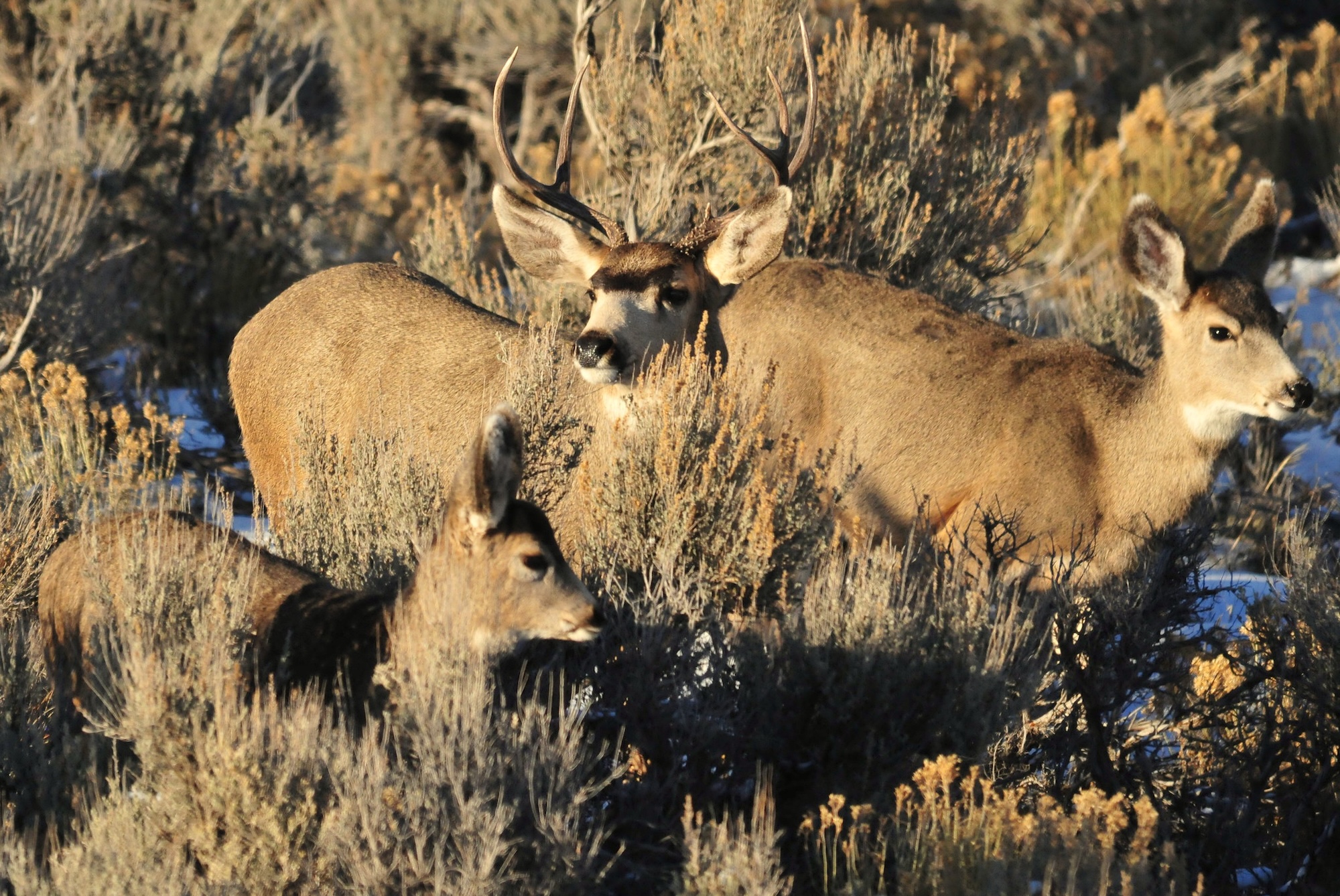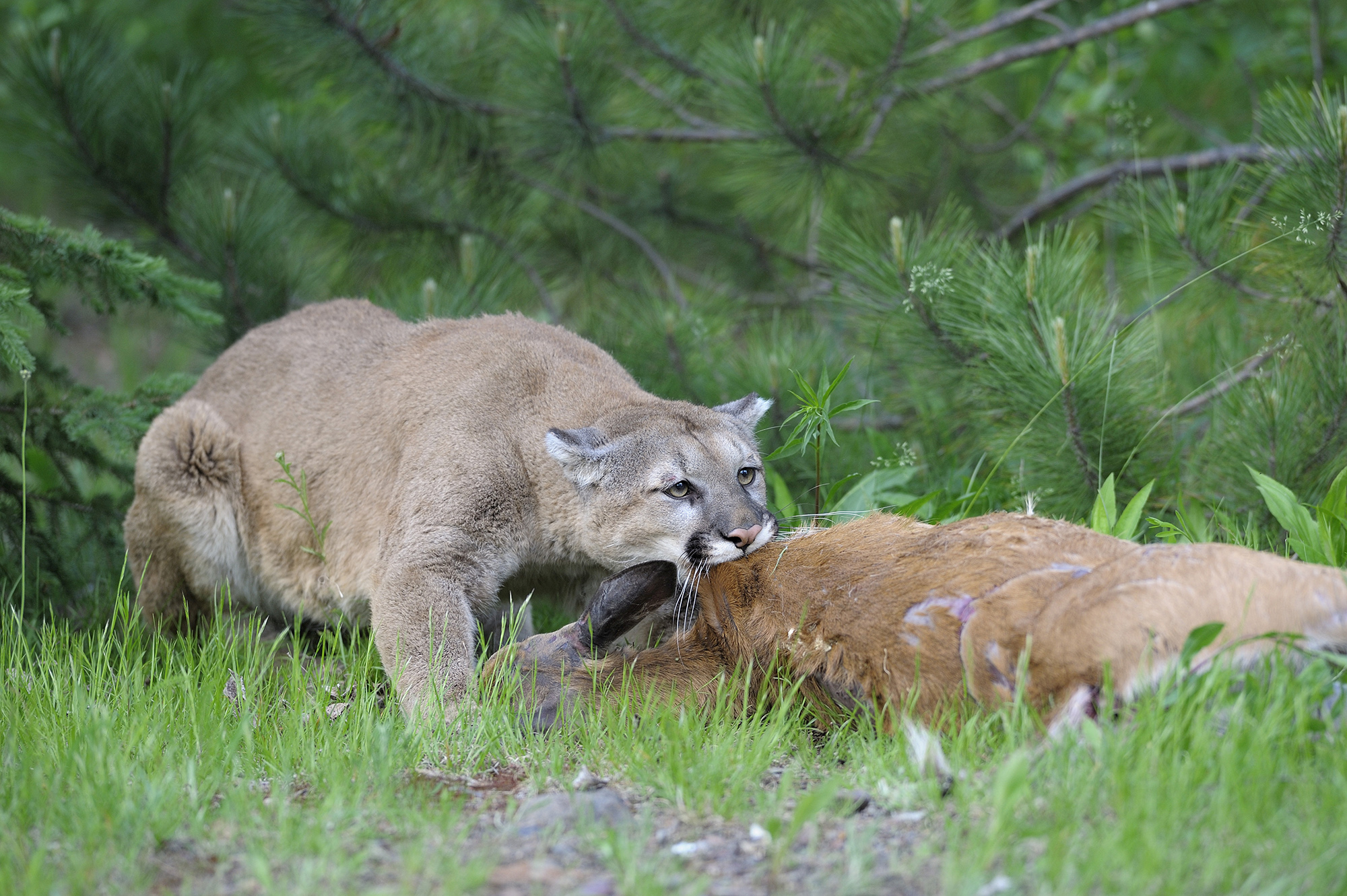Luke Worthington has chased lions in Wyoming’s mountains with his ragtag pack of seven hounds for almost 20 years. His 16-year-old daughter doesn’t know what life would be like without the barking and baying, high-energy creatures in her life.
But when the Wyoming legislature proposed a bill to allow unlimited hunting this winter, Worthington wasn’t excited. Instead, he feared the worst.
“This was an eradication bill,” says Worthington, president of the Wyoming Houndsmen Association. “And it was completely against the North American Model [of Wildlife Conservation].”
The bill’s sponsor, a representative named Mike Schmid from southwest Wyoming, said the bill was more about mule deer than mountain lions. Removing restrictions like mandatory possession of a lion tag and a designated season and quotas would be a way to combat plummeting ungulate populations that didn’t involve prohibiting oil and gas development, working on habitat, or changing the weather. Predator numbers, Schmid argued before the committee, could be controlled.
Except Worthington and dozens of other houndsmen, along with Wyoming outfitters, guides, and even mule deer proponents, said the bill wouldn’t have led to more mule deer, just fewer lions.
“It was a form of ballot-based biology and not science-based biology,” Worthington adds. “We believe mountain lions should be managed by Game and Fish based on the data from the field.”
The bill died after testimony in early February, but Worthington worries if neighboring states are any indication, this won’t be the last time Wyoming lawmakers propose an open season on lions.
Kill Lions to Save Deer
A few years ago, Utah lawmakers also concluded that killing lions is the answer to reversing deer declines. So the legislature directed the Utah Division of Wildlife Resources to look into mule deer herds and rewrite lion plans in any deer areas with high lion predation. The DWR did, and hunters killed more lions. In 2023, the legislature stepped in again, this time saying hunters no longer needed permits to kill lions, just a valid hunting license of some kind. That means instead of buying a lion permit and going lion hunting, anyone with a deer, elk, game bird or even small game license could kill as many lions as he or she wanted throughout the year.
That change resulted in hunters killing 667 lions between Nov. 2020 and Nov. 2021. Add in cougars killed for livestock depredations and the agency recorded 753 lions killed that year — a record for the department, says Utah DWR game mammals coordinator Darren DeBloois. Since then, lion harvest has stabilized, with 476, 530, and 501 killed in 2022, 2023, and 2024 respectively. It’s an increase from earlier years, but the biologist noted about 400 lions were killed each year on average in the late 1990s and early 2000s in Utah.
“Overall big picture, cougar populations in Utah hit a historic high in 2018, and that showed in deer deaths and that’s why we took action to reduce overall numbers,” he says. “Now we’ve made it easy enough to hunt that people are at the threshold that they’re willing and able to harvest.”
“This was an eradication bill. And it was completely against the North American Model.”
DeBloois believes the number of cougars killed are stabilizing in large part because of access issues. Even lion hunters with dogs can only hunt in so many places; they’re often limited in the winter by deep snowfall and private land boundaries. Adult cougar population estimates hovered just under 2,000 in 2004, slowly climbed to just below 3,000 between 2014 and 2018, and dropped back to around 2,500 recently, according to a Utah Division of Wildlife Resources datasheet.
Houndsmen opposed the effort in Utah, too, DeBloois says, adding the department’s hands were tied by the legislature’s mandate to manage deer.
“They were very, very concerned going into it,” he says about houndsmen. If the regulations had been proposed by the Utah DWR and gone out for public opinion, he’s not sure they would have passed.
Multiple Utah houndsmen declined to comment on the current state of lion hunting there for this article, some citing the delicate nature of the issue.
Wyoming’s bill would have gone even further than Utah’s by allowing people to kill lions any hour of the day — including by spotlight at night. As in Utah, it would have also allowed trappers to target lions with snares and would not have required hunters carry specific mountain lion tags. Wyoming doesn’t have lion population estimates but monitor populations based on trends, says Dan Thompson, the state’s large carnivore section supervisor.

The arguments made about deregulating lion hunting to save deer fall flat, Worthington says. Some Wyoming hunt areas have already liberalized lion seasons and have yet to see results. One region in the southern end of Wyoming’s Bighorn Mountains went to unlimited lion hunting in 2010. And in 2021-2022, the agency recorded the highest number of lions ever harvested.
“We’re still not seeing a change in mule deer populations,” Dan Smith, Wyoming’s chief game warden, told the Wyoming House committee on February 4.
The verdict is still out in Utah about the impact on deer as agency biologists study the impact of unlimited harvest.
But as Utah moved away from actively managing lions, and Wyoming considered a similar path, Texas took a baby step toward more protections for the carnivores. The state has long handled mountain lions as most states handle coyotes, skunks, or badgers, with no rules governing take of any kind.
Then in June, the Texas Parks and Wildlife Commission voted to implement trapping standards, now requiring trappers check traps at least every 36 hours. The commission also voted unanimously to ban canned hunts, which allowed people to capture lions and release them later for someone to pursure with hounds.
“The passage of these regulations is an important step toward better management of mountain lions in the state,” said Richard Heilbrun, wildlife diversity program director in a Parks and Wildlife Commission news release. “The regulations support ethical hunting and trapping practices while continuing to provide flexibility for landowners to manage mountain lions.”
Colorado, meanwhile, made news last year for a similar attempt to overhaul mountain lion hunting in the state. That ballot initiative sought to ban mountain lion hunting, but the principle was the same: It tried to wrest lion management from Colorado Parks and Wildlife.
Fears for All Wildlife Management
While Worthington’s biggest concern about the bill was a massive reduction in mountain lion numbers, others in the state worried about the precedent this kind of bill sets.
“Wildlife management is better left in the hands of wildlife managers,” Lee Livingston, president of the Wyoming Outfitters and Guides Association told the House committee. “We don’t want to see our seasons set by legislators.”
Many other speakers echoed his concerns. Wyoming’s Game and Fish Commission, like many in the country, establish hunting seasons based on information and recommendations from biologists and input from the public. If legislatures make laws governing how wildlife should be managed, the public no longer has a say.
This is what happened in Utah and is currently unfolding in Montana as the state’s lawmakers consider bills to dramatically change how people hunt wolves. The bill would trigger unlimited wolf hunting by any means including bait, artificial light, and night scopes when the state’s wolf population exceeds 550 wolves. Right now about 1,100 wolves live in Montana.
Wyoming lawmakers also considered a bill to give every licensed elk hunter a black or grizzly bear tag, even though grizzly bears are still federally protected. The measure failed.
Read Next: A Bill That Would’ve Outlawed Running Over Wolves, Coyotes with Snowmachines Failed in Wyoming
Worthington breathed a brief sigh of relief when the lion bill didn’t make it out of committee. But he’s bracing for more in the future.
“It will be something we will be fighting for the rest of our lives. It’s a war on lions. No one can figure out how to manage deer, so they’re blaming large carnivores,” he says. “It’s pretty spooky.”

